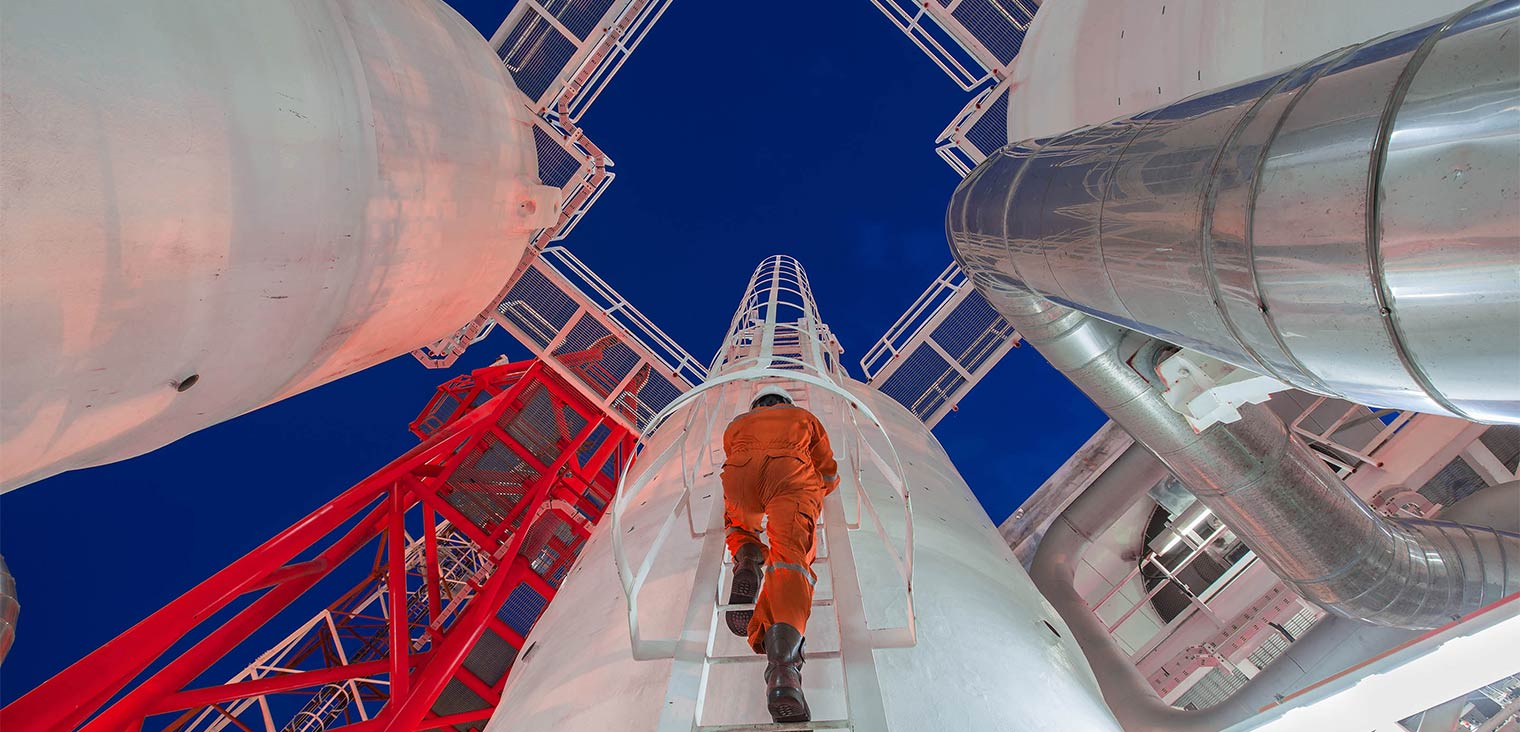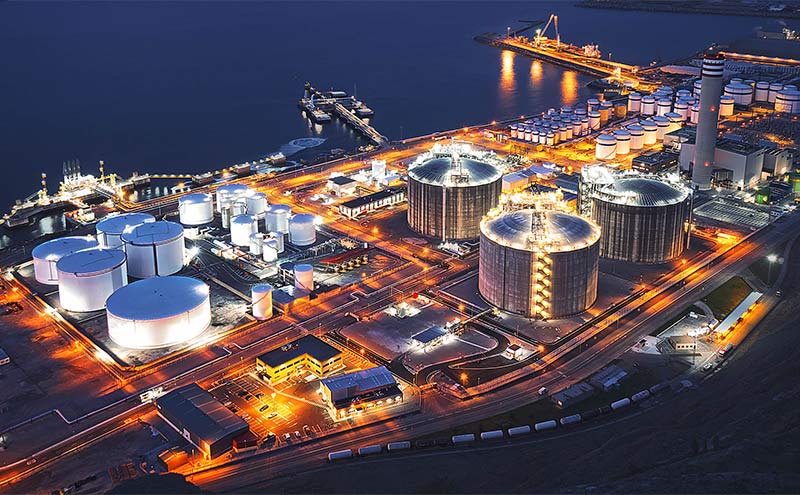- Article

- Infrastructure and Sustainable Finance
- Transition to Net Zero
- The Future of Energy
Unlocking the energy pathway: In conversation with Seb Henbest, Group Head of Climate Transition
In a recent HSBC Transition Pathways global survey conducted by Kantar, 300 companies in the energy sector told us they see the transition to net zero as a priority for their business and are accelerating investments to tackle carbon emissions.
We caught up with Seb Henbest, HSBC’s Group Head of Climate Transition, to discuss the key findings.
One of the most striking findings from the survey is that energy security considerations are actually accelerating the transition for over half of energy companies. How do you explain that?
Seb Henbest: The current energy crisis is really an imbalance of supply and demand. We’ve got a rerouting of energy on the supply side and the market is responding to that with high prices. Yes, there is hardship associated with high prices, but it is a driver of change. And in this case, it is driving more investment into renewables – in fact the first half of 2022 saw a record level of new investment. I'm not surprised by the results of the survey, and it's a really strong reminder that renewables and the move to zero-carbon and energy security are very closely aligned.
95% of energy companies see transitioning to net zero as important to business growth. What are your reflections on that sentiment?
Seb Henbest: The energy transition is now becoming a central part of business strategy, and how companies look at their future growth trajectories. Around 90% of world emissions are now either already covered by a government net zero target, or a target under discussion, and about one third of the largest publicly traded companies now have net zero targets. The push towards decarbonisation is evident everywhere, and if you're not starting to pivot your business in this direction there's a real risk of being left behind.
Technology featured very strongly in the survey as an enabler for the transition. To what extent are the key technologies for the energy transition available – and are they affordable?
Seb Henbest: You can divide the climate technology we need into two buckets. The first contains the things you can deploy today. This includes mature and commercially available clean technology such as wind and solar power, batteries, electric vehicles and heat pumps. The challenge for these is to scale up supply chains so you can deploy them fast enough this decade to get on track for net-zero. The second bucket includes technology that aren't yet economic or are still in pilot and development stage - this includes things like hydrogen, synthetic fuels and carbon capture and storage. These technologies still need a lot of investment and production scale to get to where they need to be by 2030, so that they can play a big role over the subsequent 20 years to 2050.
Right now, it’s cheaper to build wind or solar generation in many countries than it is to run existing coal and gas-fired power plants, so it’s really a matter of getting more and more of this stuff in the ground. And we're only a few years away from the same thing for electric vehicles. Whether you are a household or a big multinational company, it’s your technology decisions that are going to make the difference here.
84% of the companies in this survey said they have a transition plan. But what does a credible transition plan look like for you?
Seb Henbest: Knowing your emissions and setting some targets are the foundation steps. But then we need to see a credible transition plan. For me there are two critical things. The first is whether the plan addresses all emissions from legacy business lines and whether actions on the ground are specifically aligned to these objectives or simply ad hoc. Overall does the transition plan describe how legacy business lines are going to change, and describe the new business lines that will emerge? The second is whether the company is investing a meaningful amount of capex, because that tells us how serious things are. What’s encouraging from the survey is, we see a growth delta in capex of around 20% in the next few years and coupled with that, we are seeing more companies feeling confident around meeting their targets and disclosing their emissions. If those things are in place, then as a bank we can be confident the company is on the right track. It’s really important to remember that there are different pathways – take the IEA or IPCC pathways, there are lots of different technology options, there are lots of different rates of change. But it all starts with a plan, target setting and investment to close the gap.
Looking at the oil and gas sector, 88% of companies said they have a dedicated transition plan in place for their transition targets, but only a small percentage are reporting on the full range of scope 1, 2 and 3 emissions. What hurdles do these companies face when it comes to setting emissions targets?
Seb Henbest: For oil and gas companies the bulk of their emissions are scope 3: it's how their products are used downstream. These emissions aren't in their direct control, and there's a wide variety of use-cases for these fuels, so it’s quite challenging to understand that emissions footprint. But it's really critical that that exercise is done. It's very hard to set a comprehensive plan to reduce emissions if you don't know what emissions you’ve got or where the bulk of them come from. Some oil and gas firms are really on top of this and have been reporting scope 1-3 emissions a number of years and have set both long-term net-zero and interim emissions targets. Others are earlier on their journey, having focused to now on Scope 1 & 2 emissions and targets, but I anticipate we will have full emissions reporting from most of the world’s major companies in the next year or so.
In the power sector, the survey showed that renewables are the top target of current capital investments. How do you think companies are adapting?
Seb Henbest: The power sector is right at the heart of a net-zero-emissions energy system. Most utilities are building renewables fast. There is a huge amount of deployment going on, at the same time as there is a managed phase out of unabated coal. But it’s not nearly fast enough. One of the real challenges is that electricity demand will rise significantly through the transition as we electrify transport, heating and industry. Meeting growing demand while retiring legacy coal and gas power stations means the build rate needs to jump. Renewables are cost-competitive without subsidies, and clean electricity will need to account for around 75% of all emissions reductions this decade. For that to happen, governments have really got to get behind the power sector and provide the right price signals and lower the regulatory barriers to deployment.
You’ve talked about spending as a key component to credible plans, but respondents also told us that costs and financing are the biggest hurdles. How do we overcome those?
Seb Henbest: It's a really great question. On one hand, in the renewable sector, there is more capital than there are projects. But on the other hand, we need to scale-up earlier stage technologies that don’t yet have a market. Whether that's clean hydrogen, biogas, sustainable aviation fuel, carbon capture and storage, next-gen nuclear, these are all in varies stages of pilot mode at the moment. Driving these technologies to commercial scale is where conventional finance struggles to play a role, but it is a really important gap to fill. How do we provide finance for these earlier stage technologies so they can scale up and the costs can come down? I think is really what the survey is pointing towards. Government has a major role to play here is providing market pull and the right price signals to help demand for these new products as supply becomes available.
If we did this survey again next year, what would you expect to see?
Seb Henbest: I think it will show the direction of travel is getting stronger. Some of these financing and technology challenges won’t be magically solved in 12 months, but I’m confident we will see more and more companies making low-carbon a key part of their business strategy. I expect to see more target setting, capex spend, and hopefully some key breakthroughs in climate tech. It's a really encouraging survey and I have little doubt future iterations are going to make it even clearer where we are heading.
Today we finance a number of industries that significantly contribute to greenhouse gas emissions. We have a strategy to help our customers to reduce their emissions and to reduce our own. For more information visit www.hsbc.com/sustainability.
For HSBC’s Transition Pathways survey, HSBC has worked with Kantar. The survey is not wholly-representative of HSBC’s customer base and covers respondents across 300 key financial decision makers from businesses operating in the energy sector, comprising Oil & Gas (135 businesses), Power (141 businesses) and Coal (24). The survey findings and responses have not been independently verified. Renewables were the primary energy source for 132 businesses. Businesses were located in Europe (120), Asia (101), the Middle East (43) and North/Central America (36). Overall 77 (26%) had a turnover between $5 and $10m, 70 (23%) had a turnover between $10 and $500m, 153 (51%) turnover in excess of $500m, of which 65 (22%) had turnover in excess of $2.5Bn. 135 (45%) had been established for less than 10 years and 165 (55%) for more than 10 years. Data was collected through an online questionnaire and the survey ran for three weeks from 26 September to 18 October 2022.
In preparing this survey, HSBC has relied upon appropriate available data, information and responses given at the time of writing. This report should not form the basis of any third party’s decision to undertake, or otherwise engage in, any activity and third parties do not have any right to rely on it. Neither HSBC nor Kantar accept any duty of care, responsibility or liability in relation to this research or its application or interpretation, including as to the accuracy, completeness or sufficiency of it or any outcomes arising from the same.






